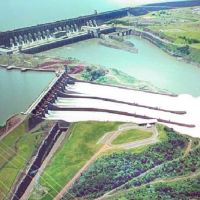Special Feature: Freshwater Biodiversity and Ecosystem Services

Fisherman on Inle Lake, Myanmar (Burma). The harvesting and consumption of freshwater species is just one of the many services that freshwater ecosystems provide. Photo: Shannon Holman
Over the last decade the notion of ecosystem services has transformed from metaphor into a mainstream policy framework. The concept of nature as a stock of capital that sustains flows of ecosystem services, which underpin and support economies and human well-being, nowadays has considerable currency. It was a central pillar of the Millennium Ecosystem Assessment and was reinforced in policy circles with the influential TEEB reports (The Economics of Ecosystems and Biodiversity). The ecosystem services concept is actively being embraced by European Commission directorates responsible for regulatory frameworks and policy in the areas biodiversity, ecosystem restoration, sustainable land and water use, climate change mitigation, and the design of green infrastructure.
For biodiversity scientists the ecosystem services policy frame poses a straight forward but challenging question, namely “what is the relationship between biodiversity and ecosystem processes, functions and services?” In these worrying economic and human-centric times this question can easily be re-framed as simply “how much biodiversity do we need? When faced with such questions, it is easy for people working on freshwater biodiversity to feel out of their depth (excuse the pun).
We can’t hope to answer questions of this magnitude in a blog special feature. However, the summer is a time to kick-back a little and to contemplate on the bigger questions. Whatever your view on the ecosystem services concept it is here to stay, for the time being at least, and it will change biodiversity science and policy. We all need to engage with it at some level so as to assure that freshwater biodiversity is not over-looked. This special feature aims to support such engagement though a series of posts that we hope will provide an accessible and interesting briefing on the underlying concepts, the state of the science-policy interface and some of the interesting issues and trade-offs that the ecosystem services concept generates. The articles included feature guest authors from inside and outside the BioFresh project, interviews with key actors, as well as pieces from the BioFresh blog editorial team.
Below is the list of posts we currently have in mind. If you think there is something missing and/or would like to contribute a post please get in touch. More importantly please extend and critique these posts by adding your comments. This is a complex and dynamic topic and the more voices the better!
Paul Jepson & Will Bibby
Feature articles:
What is the ‘ecosystem services’ concept? by James Erbaugh
The LIVING RIVERS Foundation: protecting and promoting the ecosystem services of rivers
Perspective: Martin Sharman on ethics and the ecosystem services paradigm
A tour of EU-commissioned research on ecosystem services by Dr Paula Harrison
What rivers do for us by Dr Christian Feld
Professor Victoria Strang: Thinking with water
Does ecosystem services need a radical critique? In conversation with Professor Victoria Strang
Perspective: Should the wildlife media pay for ecosystem services?
Water Funds an ideal ‘PES’ project – or better?
Highlighting an ecosystem services project in action: The DURESS Project
An update on the work that BioFresh is doing on ecosystem services
Biodiversity, ecosystem services and EU policy
Photo essay of the freshwater biodiversity present in a Thai food market
Bringing biodiversity in to the ‘food, energy and water security nexus’
Crayfish harvesting in the Thames – tackling a problem with a solution














